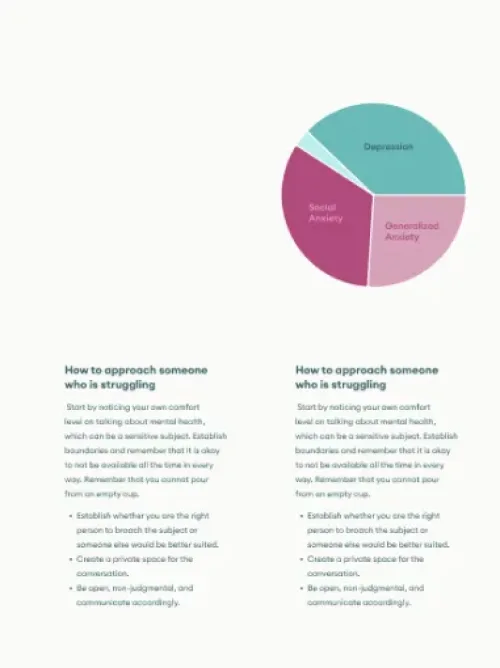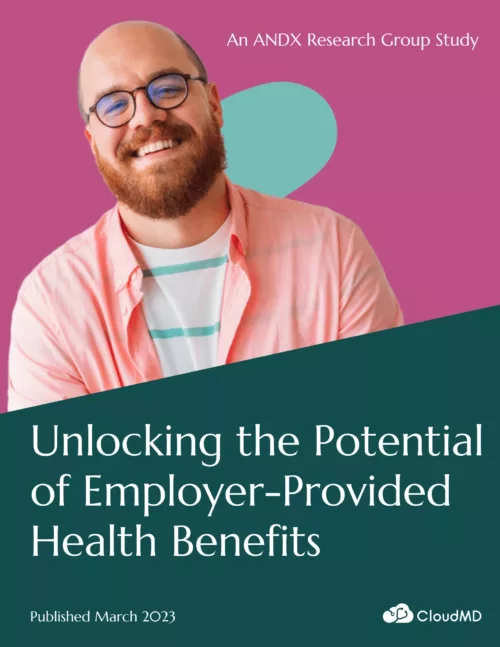How Does Social Anxiety Affect the Workplace?

5 Minute Read
Leaders are under constant pressure to be knowledgeable on issues employees may have and need help with. This includes mental health. On this post, we will be explaining what Social Anxiety is, how it differs from a disorder and how it affects the workplace.
What is Social Anxiety?
Being the center of attention is uncomfortable for some, and nerve wracking for others. In fact, public speaking is listed as one of the most common fears people have. While any form of social performance can make a lot of us socially anxious, these fears might not ever rise to the level that they could be classified as a disorder.
Some on the other hand are painfully shy and self-conscious, and fear being judged, embarrassed or humiliated. As a result, they will avoid social and performance settings, and if they cannot do so, struggle to cope. Those who experience very high levels of social anxiety, so that it causes a lot of distress and interferes with how they would like to live their life, may have what is called Social Anxiety Disorder. Social Anxiety Disorder is a diagnosis given to people who experience very high levels of social anxiety, to the point of high distress or impairment.
According to research, when it comes to treating it, Cognitive Behavioural Therapy (CBT) is the most studied and best supported nonpharmacological treatment (treatment without the use of medication) for social anxiety.1
It is important to note that social anxiety is not the same thing as generalized anxiety or shyness. Please see our FAQ section below to learn more.
How Does Social Anxiety Turn Up in the Workplace in Canada?
According to Statistics Canada, the lifetime prevalence rate of Social Anxiety Disorder is between 8% and 13%.2 This means for every 100 hundred people you employ at your firm, on average 8-13 may suffer from social anxiety at some point in their lives.
An employee with social anxiety, for example, typically fears being evaluated. This can make them very vulnerable and prone to having a difficult time managing symptoms when it comes to performance appraisal time.
Your employees with social anxiety may struggle with and seek to avoid some of the below behaviours as well:
- Public speaking, presentations, or any type of performance in front of an audience
- Participating in job interviews
- Making eye contact
- Being the centre of attention in social settings
- Eating or drinking in front of others
- Interacting with strangers
- Expressing opinions or displaying assertiveness
- Interacting with people of authority
- Making small talk
How Does Social Anxiety Currently Affect Workplaces?
While employees of essential business and front-line workers have been continuing work in physical settings, a lot of employees have been working from home. According to Statistics Canada, the number Canadians working from home was at 5.4 million in January of 2021.3 Most of these employees have had zero to little exposure to some of the behaviours that trigger social anxiety in the workplace in the past year. This also means that they have not had any opportunities to cope with these situations.
The number of Canadians seeking help from CloudMD for Social Anxiety Disorder and social anxiety related symptoms has declined by almost 50 per cent. However, as many provinces begin reopening, the number of individuals seeking help for social anxiety is expected to increase rapidly, fueled by over a year of pandemic lockdown, isolation and limited social interaction.
FAQs – Your Most Common Questions Answered
Is social anxiety a disorder?
While social anxiety is a fear of judgement and humiliation related to social performance, these fears might not ever rise to the level that they could be classified as a disorder. If the levels of social anxiety cause a lot of distress or interfere with how a person would like to live their life, this may be classified as Social Anxiety Disorder. A diagnosis of Social Anxiety Disorder can only be given by licensed mental health professionals. Our program is designed to help individuals struggling with social anxiety, whether or not their symptoms meet criteria for a diagnosis of Social Anxiety Disorder.
Are social anxiety and shyness the same thing?
According to the American Psychological Association: “Shyness is the tendency to feel awkward, worried or tense during social encounters, especially with unfamiliar people.”4 So, although shyness and social anxiety are not the same thing, social anxiety can be considered as a case of excessive shyness or self-consciousness.
Can social anxiety be cured?
Social anxiety is a condition that can be treated by trained mental health professionals. Untreated social anxiety can lead to depression. According to the Canadian Association of Mental Health (CAMH), when it comes to treating Social Anxiety Disorders, Cognitive Behavioural Therapy (CBT) is the most effective form of treatment.5
How common is social anxiety in Canada?
According to Statistics Canada, the lifetime prevalence rate of Social Anxiety Disorder is between 8% and 13%”.2 This means for every 100 hundred people in Canada, on average 8-13 may suffer from Social Anxiety Disorder at some point in their lives.
Is Social Anxiety considered a disability in Canada?
According to Disability Credit Canada, “if symptoms become disabling, many can seek financial support for treatment through the Canadian disability tax credit”.
What is the difference between social anxiety and introversion?
While people are born as introverts, social anxiety is developed. According to the Canadian Association of Mental Health (CAMH), Social Anxiety Disorders tend to develop prior to the age of 18.5 Introverts will make the active choice to keep to themselves, given the opportunity. Social anxiety, on the other hand, is not a choice. In social anxiety, the fear of judgement prevents people from doing things in their lives that they would like to do.
- Guo, S., Deng, W., Wang, H., Liu, J., Liu, X., Yang, X., . . . Li, X. (2020, November 10). The efficacy of internet‐based cognitive behavioural therapy for social anxiety disorder: A systematic review and meta‐analysis. Retrieved April 13, 2021, from https://onlinelibrary.wiley.com/doi/abs/10.1002/cpp.2528
- Section b – anxiety disorders. (2015, November 27). Retrieved April 13, 2021, from https://www150.statcan.gc.ca/n1/pub/82-619-m/2012004/sections/sectionb-eng.htm
- Government of Canada, S. (2021, February 05). Labour force Survey, January 2021. Retrieved April 13, 2021, from https://www150.statcan.gc.ca/n1/daily-quotidien/210205/dq210205a-eng.htm
- Shyness. (n.d.).Retrieved April 13, 2021 from https://www.apa.org/topics/shyness.
- Social anxiety disorder. (n.d.). Retrieved April 13, 2021, from https://www.camh.ca/en/health-info/mental-illness-and-addiction-index/social-anxiety-disorder




